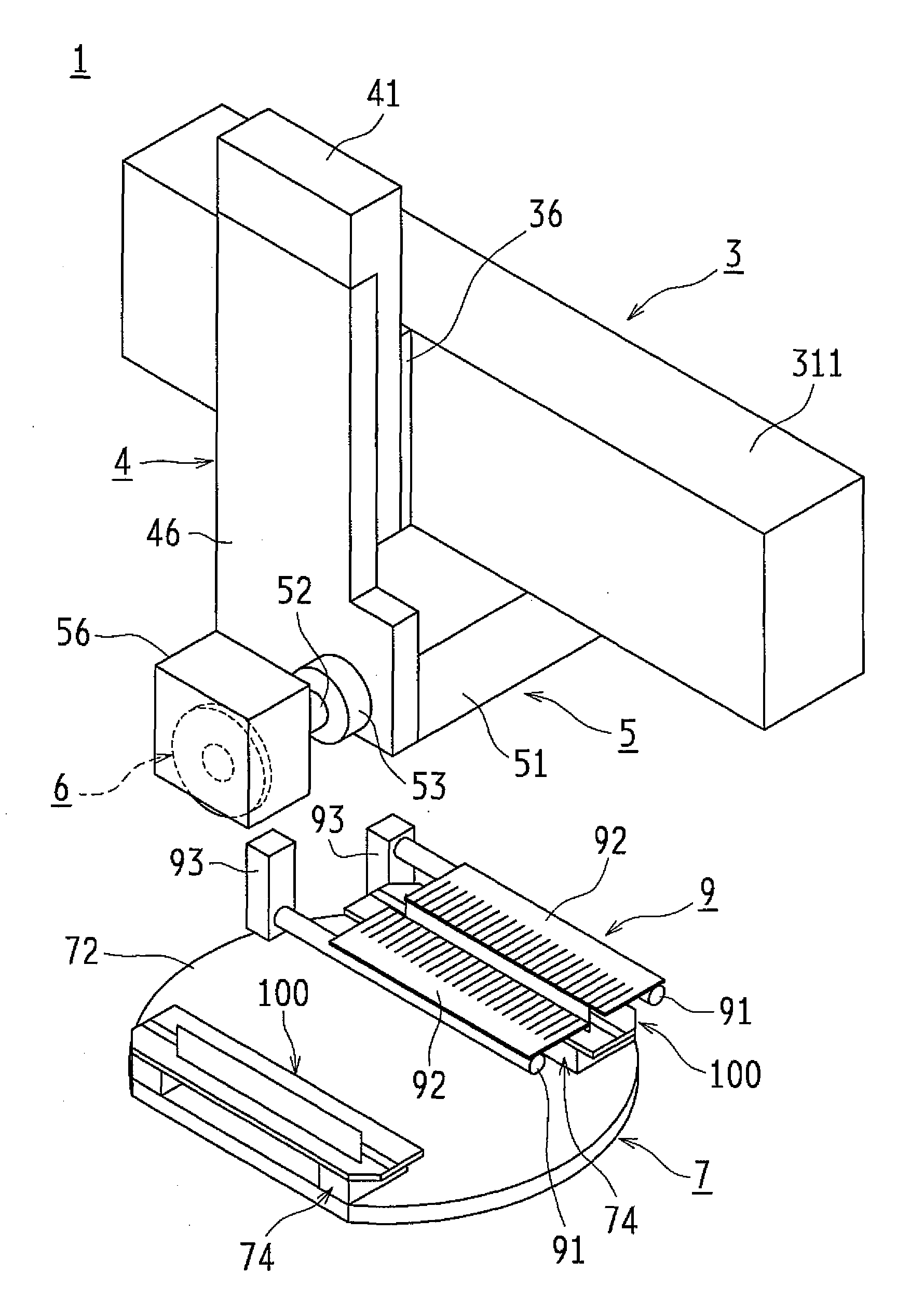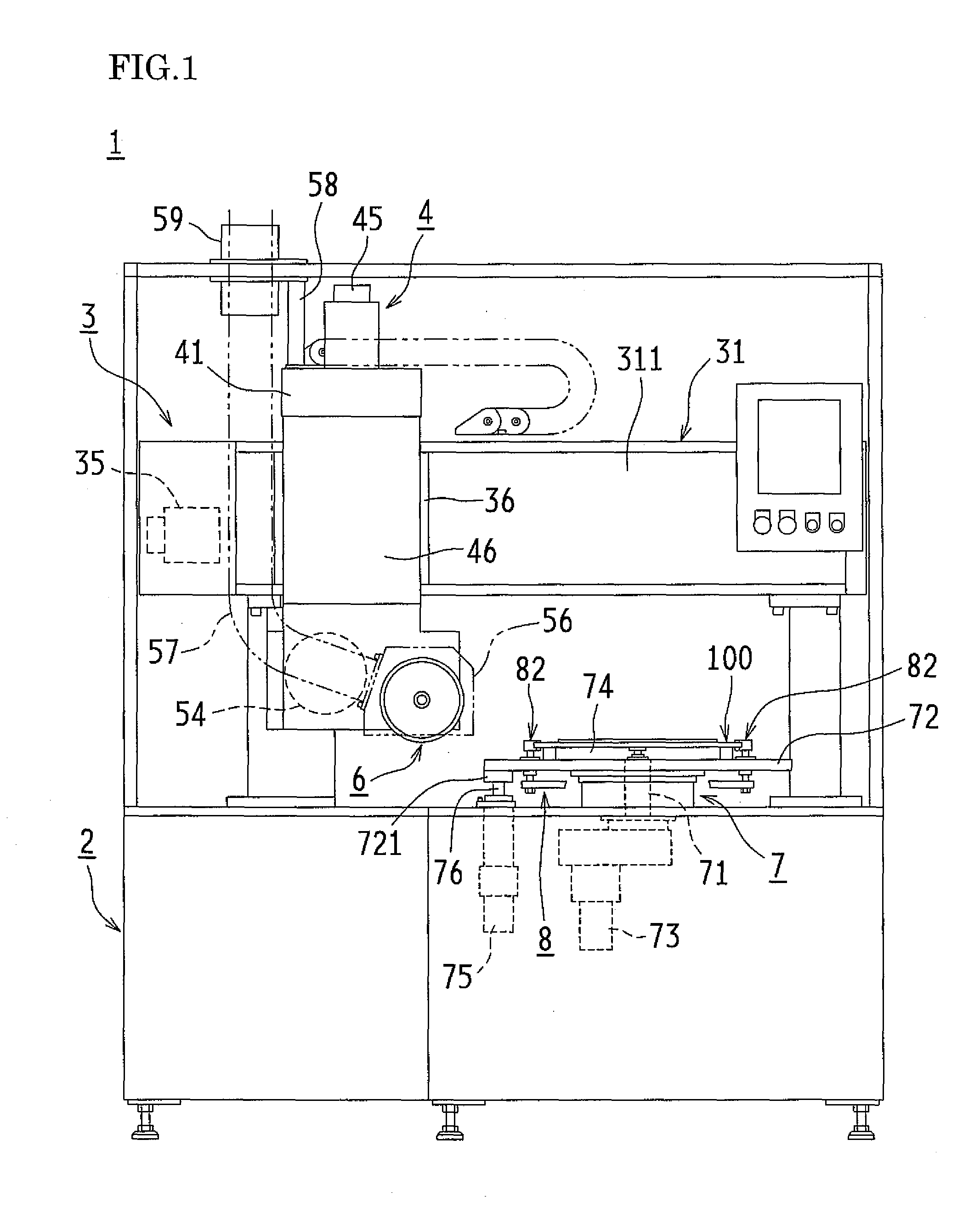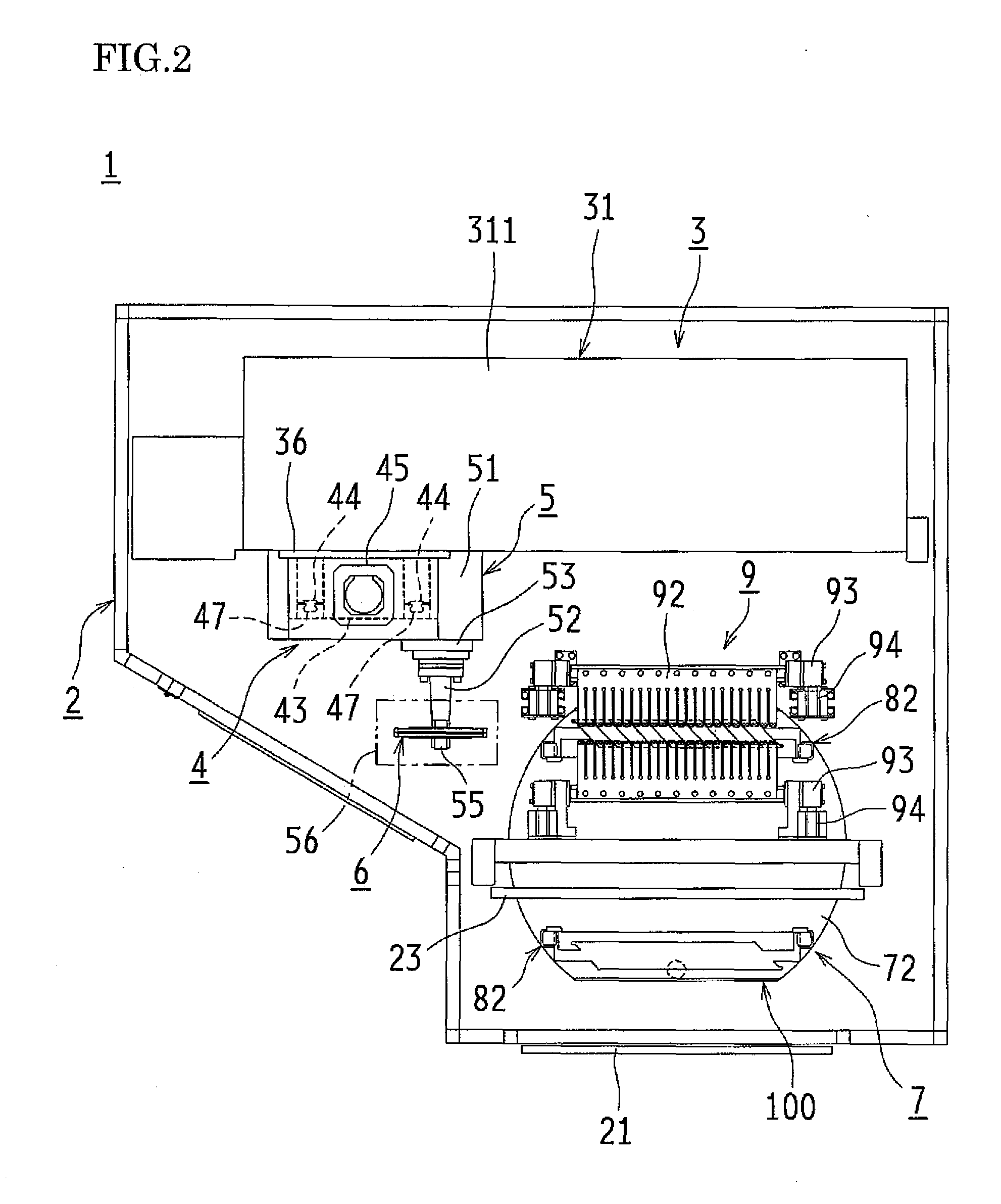Groove machining apparatus for insulating spacer and groove machining method for the same
a technology of machining apparatus and groove, which is applied in the direction of metal working apparatus, metal-working machine components, manufacturing tools, etc., can solve the problems of unevenness between the surface machined by the grooving rotary blade and the surface, the speed of the conveying cassette is restricted, and the production cost is high, etc., to achieve excellent smoothness, efficient groove formation, and suppress burring and fuzzing
- Summary
- Abstract
- Description
- Claims
- Application Information
AI Technical Summary
Benefits of technology
Problems solved by technology
Method used
Image
Examples
Embodiment Construction
[0033]Hereinafter, an embodiment of the present invention will be described with reference to the drawings.
[0034]FIGS. 1 to 4 show an embodiment of a groove machining apparatus 1 according to the present invention.
[0035]It should be noted that before describing the groove machining apparatus 1, a cassette 100 that is used in machining grooves in insulating spacers S will be described. This cassette 100 is, as shown in FIG. 10, an approximately rectangular plate whose front left and right corners are cut off so as to conform to an outer circumferential circle of a rotary table 72 (described later) when viewed from above, and in order that a plurality of (ten in an embodiment) insulating spacers S can be aligned in a right-left direction when their short sides are regarded as the bases, a parallelogram-shaped recess 101 having a horizontal dimension that is multiple times longer than the length of a short side of each insulating spacer S, a vertical dimension that corresponds to the h...
PUM
| Property | Measurement | Unit |
|---|---|---|
| rotation | aaaaa | aaaaa |
| width | aaaaa | aaaaa |
| depth | aaaaa | aaaaa |
Abstract
Description
Claims
Application Information
 Login to View More
Login to View More - R&D
- Intellectual Property
- Life Sciences
- Materials
- Tech Scout
- Unparalleled Data Quality
- Higher Quality Content
- 60% Fewer Hallucinations
Browse by: Latest US Patents, China's latest patents, Technical Efficacy Thesaurus, Application Domain, Technology Topic, Popular Technical Reports.
© 2025 PatSnap. All rights reserved.Legal|Privacy policy|Modern Slavery Act Transparency Statement|Sitemap|About US| Contact US: help@patsnap.com



